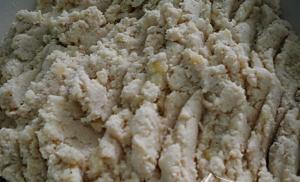Are there seas without shores? A sea without shores Why is the Sargasso Sea without shores.
Text by Pavel Digay
In February of this year, the French yacht Julia got into trouble. Having passed the Panama Canal, she headed from the shores of Central America to the shores of Europe. There were four people on board the yacht: two adults - father and mother, and their two children - a 9-year-old girl and an 11-year-old boy. Having safely passed the Caribbean Sea, passing between Haiti and Cuba, leaving the Bahamas behind, the yacht turned to the northeast. The travelers’ plans had no intention of visiting Bermuda; they wanted to go straight to Gibraltar in order to enter the Mediterranean Sea and in Marseille, their homeland, put an end to their trip around the world. Everything was fine until thunder struck. Literally. The sky was overcast. Lightning stretched from them to the sea. One of them - perhaps because the Julia's hull is made of steel - hit the mast. Fortunately, the lightning rod worked reliably, but the navigation equipment was disabled. And not only the devices themselves, all the wiring turned out to be unusable. The situation, however, did not look dramatic, there are sails, a motor, and in the end you can ask for help... But it turned out that the motor could not be started, the damaged batteries did not allow contact with the ground, the emergency buoy also refused to work - and there was no breeze. Complete, dead calm! This happened the next day, and a week later, and two weeks later. However, there was no panic on board: there was enough food, although the non-working refrigerator made adjustments to the menu, there was also enough water. All that remained was to be patient and wait, entertaining yourself by swimming among the sargassum seaweed. Yes, the yacht and its crew found themselves in the center of the Sargasso Sea, a mysterious place and, as was believed in past centuries, deadly.
How deadly?
In the era of the Great geographical discoveries, when Spanish, Portuguese and other sailing ships sailed from the Old World to the New World, they often found themselves in a calm zone stretching between 23-35° N. w. and 30-68° W. d. The merciless sun and complete calm for many weeks led to people losing their minds and even dying of hunger and thirst. Indeed, this happened, but for some ship to become completely deserted for the specified reason - there is no documentary evidence of this, these are already tales. Another thing is certain: having become prisoners of the Sargasso Sea, the first thing the sailors did was get rid of the horses that they were transporting to the American colonies. That is why these latitudes were nicknamed “horse” - Horse Latitudes. But sooner or later the wind filled the sails, and the ships continued on their way.
The Julia's drift lasted eighteen days. Although it seemed that the yacht was frozen in place, in fact it was slowly circling clockwise in a huge whirlpool, which is called the Sargasso Carousel. But the wind came, and everything began to move - the people on board began to smile, and the yacht headed towards the shore, but towards what was closer, to the Bermuda Islands. She got there without any incident, to the great joy of the crew, who were eager to tell the world and journalists about their stay in the very heart of the Sargasso Sea. Their story, however, turned out to be colorful only at the beginning, where there was a thunderstorm, thunder and lightning, but then... day after day it was the same. Heat, sublimates, swimming, algae - melancholy! And yet, he forces us to turn to past examples, and not from glorious times, but relatively recent ones.
In 1894, the schooner Norwood was heading from the United States to Europe. The hurricane carried it south into the Sargasso Sea. In the first stormy days, the crew of the schooner abandoned the ship, which had sprung a leak, and moved into the boats, forgetting about the cabin boy, the cook's assistant named Thomson. Left alone on a ship that settled but remained afloat, Thomson did not give up, but repaired one of the remaining boats, armed it with a mast and a sail, and got out of the trap (and his “comrades” on the crew disappeared into the ocean). As the cabin boy later said, during his journey across the sea, reminiscent of “a green meadow or swamp,” he saw an ancient galleon entangled in algae, next to it an 18-gun brig, and in the distance a rusty steamer. He should have limited himself to this, but the subsequent story about the meeting with the sea serpent somewhat undermined the credibility of everything said earlier. However…
In 1912, the Italian three-masted sailing ship Herat was also “delivered” by a storm into the Sargasso Sea. The hopeless drift in a vicious circle continued for seven months. During this time, the sailors saw huge “islands” of algae, from which tree trunks and wreckage of sunken ships protruded. When supplies of food and water were almost exhausted, a saving fresh breeze carried the Herat into clear waters.
And before that... Joshua Slocum is a name known to every sailor. In 1898, while completing his circumnavigation of the world - the first circumnavigation of the world sailed alone on a yacht - Slocum became stranded in the Sargasso Sea for a week. 10 years passed, and in 1909, the captain of the Spray set off on his famous boat from the island of Martha's Vineyard (Massachusetts) to South America. Since then no one has seen him again. And it seems that his path lay just across the Sargasso Sea...
And one more thing... In 1955, the yacht Connemara 4 was discovered in the Sargasso Sea without a single person on board. What happened on board remained a mystery.
And finally... In 2012, the crew of the Russian yacht Scorpius, led by captain Sergei Nizovtsev, tried to set a world record by completing two round-the-world trips in one year without a break - around Antarctica and North Pole. At a point with coordinates 27 degrees 9 minutes s. la., 64 degrees 50 minutes per west. d., and this is the “side” of the Sargasso Sea, the yacht was struck by lightning. All navigation devices have failed, except... the Russian GLONASS. And the engine also remained in good condition. So our travelers didn’t have a chance to experience all the horrors of “Sargasso captivity” - they left! And then they set a record.
So what is this, the Sargasso Sea?
First, about the name. When the ships of Christopher Columbus made their way through these waters, the sailors noticed the berries with which the branches of algae were hung, they were very reminiscent of sargazo - the berries of small wild grapes. So they began to call the strange algae, and then the sea, which became Sargasso, although if desired, it can be translated poetically - Sea Grapevines. By the way, in the old days this sea was also called the Ladies' Sea, because, according to sailors, even the weakest woman could hold the helm here. The Ladies' Sea is also beautiful.
It should be noted that the algae “berries” are not fruits at all; Sargassum does not have them at all; they reproduce by spores. They are actually like air-filled floats that hold the plant near the surface. Sargassum grows along the coasts of the West Indies and the American continent, where they do not float, but take root in the bottom soil. Hurricanes tear them out and carry them into the ocean, where they are picked up by currents and collected in the whirlpool of the Sargasso Sea. The reserves of floating algae here are estimated at approximately 10 million tons.
Let us return, however, to the sea. However, some geographers believe that this section of the World Ocean cannot be called a sea at all. Because it has no shores! To this, another - most geographers object: the presence of coasts, they say, is not the main feature that scientific world endows the seas, most importantly, with special hydrometeorological conditions, namely, they sharply distinguish these waters from their surroundings. And this is already indisputable.
The Sargasso Sea (we will still call it that) is located above the deep-water part of the Atlantic Ocean - the North American Basin, whose maximum depth is 6995 m. The boundaries of the sea, which has the shape of a giant ellipse, are ocean currents: in the north - the North Atlantic, in the south - the Northern Trade Wind, in the west - the Gulf Stream, in the east - the Canary.
It is clear that “liquid shores” are, by definition, unstable, so the sea area is constantly changing from 8.5 to 4 million km2. The currents that have encircled the Sargasso Sea push their water into it, while at the same time making it difficult for its water to get out. This is why the level of the Sargasso Sea is 1-2 meters higher than the surrounding ocean. But this is not the only result. Another one is the increased salinity of the water due to the non-mixing of the layers and for the same reason - its temperature. IN winter months the water temperature does not drop below +18, and in summer reaches +28; even at a depth of 400 m, the water is warm - up to +17, while in other areas of the ocean at the same depth the temperature is only +5°.
The Sargasso Sea is located in an area of increased atmospheric pressure, so it rarely blows here strong winds. There is little precipitation. The fumes are strong. Internal currents are weak. As a result, the water is extremely poor in oxygen, and therefore in phytoalgae, and therefore in zooplankton. That's why it's like this here clear water- visibility reaches 60 meters, which is higher than in the Red Sea, which is considered the standard of water purity due to the lack of inflowing rivers. But for the same reason, the fauna here is not rich. But the one that exists is unique!
Sargassum has become a floating home for tiny crustaceans and crabs, shrimp, seahorses... Almost all the inhabitants of the Sargassum community have a body shape and color that hides them among the algae. This is the Sargassum clown, whose body looks like a twig of sargassum, he himself is yellow-brown, and his fins resemble hands with which he “grabs” algae. An interesting animal is the traveler crab, famous for, which upset Columbus’s sailors: when they saw a crab sitting on a Sargassum branch, they mistakenly decided that the land was somewhere nearby. In ancient times, there were a lot of turtles in the Sargasso Sea, and they even sometimes saved sailors caught in the calm from starvation. Of the creatures of more impressive size, there are coryphens, which feed on flying fish, and sharks, but since there are very few people who want to splash among the algae of the Sargasso Sea, there is no data on tragic encounters between people and sharks. And also - acne! Only a little over a century ago their secret was discovered - they spawn in the Sargasso Sea, thousands of kilometers from their rivers, and, having given birth to a new generation, die in its waters. And that's why they do this long haul, there is still no clear answer.
Truly, the Sargasso Sea is one continuous phenomenon.
But is it worth attributing to him something that does not exist, as experts in the field of “paranormal” knowledge do? They consider the Sargasso Sea to be responsible for all the troubles that happen in the notorious Bermuda Triangle. One of the leading “experts,” Australian oceanographer Richard Sylvester, argues that the slow “carousel” of the Sargasso Sea generates smaller, but incredibly strong and rapid whirlpools that pull ships into the abyss. In turn, minicyclones caused by whirlpools suck in planes. Such hypotheses are certainly interesting as “mind games,” but it is worth listening to other scientists who are concerned that at the center of the “carousel” there is more and more plastic waste, and this is no longer a secret - a problem that requires a solution.
Win-win plot
The legends surrounding the Sargasso Sea could not help but be reflected in literature, and especially adventure literature. The “scenery” was too suitable - broken ships of all sizes and eras, rotted sails, skulls and bones, and treasures that the inhabitants of this incredible little world do not need, from which there is no way out alive.
Writers have approached this plot more than once, but hardly anyone will dispute the fact that Alexander Belyaev, known not only for his books “The Amphibian Man” or “The Air Seller,” but also for “The Island of Lost Ships,” did it best.
The first chapters of the novel were published in the World Pathfinder magazine in 1926. IN next year publication was completed, and a separate edition was published at the same time. Since then, the novel has been republished many times; its total circulation has long exceeded ten million copies. And all because the history of a strange state in the center of the Sargasso Sea, where dozens of abandoned ships huddled together, turned out to be fascinatingly interesting. Plus, the love of the main characters and the attempt on this love by the governor of the Island. Plus a crime that never happened, and an absolutely positive character who actually is a criminal. In general, a complete set of exciting moves that are not at all hampered class struggle and denunciation of the “beastly grin of capitalism.”
In 1987, a film of the same name was made based on the novel, which turned out to be unsuccessful, despite the presence of “star” Konstantin Raikin in it. Because the film was performed as a musical, and the dances and songs somehow do not fit with real adventures, brutal heroes and impeccable beauties.
In 1994, again based on the novel, the film drama “Rains on the Ocean” was filmed. Few people have heard of this film, and even fewer have seen it. And whoever saw it will agree: it’s for the better. The movie turned out to be unsuccessful.
And the book lives on! And completely deservedly so.
Did you know that there are seas without shores or borders? Where mirages live constantly and the sun rises on both sides?
the site knows a lot of strange and interesting things about this mysterious sea.
On our planet there is a vast sea that does not have a solid coastline. It is located in the Atlantic Ocean, in the area of the Bermuda Triangle, and is clearly visible from space.
The Argasso Sea has the shape of an almost regular ellipse. It is surrounded on all sides by warm ocean currents, which cause the huge mass of water to slowly rotate clockwise.In this place you can observe unusual mirages with a split moon. Simultaneous sunrise from two opposite sides. Ghost ships gliding across the water surface. Giant disks “pop up” from the depths.
One more unique feature The Sargasso Sea is that its surface is one meter higher than the water level of the surrounding ocean. And this is also thanks to the ocean currents of the Gulf Stream, North Atlantic, Canary and Interpassat. They seem to “lift” him.
Sea in the ocean
Mysterious sea on Earth
The area of this mysterious reservoir is about 6 million km 2. Due to the lack of solid banks and instability of currents, it is constantly changing, sometimes increasing and sometimes decreasing. Maximum depth reaches 7 thousand meters. IN summer period The water temperature is 26-28 o, in the cold season it does not fall below 16-18 o.
Purity and transparency of saturated water of blue color, allows you to see life underwater world to a depth of up to 60 meters.This transparency indicator is higher than in the Red Sea, which is considered the cleanest on our planet. In many places the surface is covered with accumulations of brown algae.

Life in the Sargasso Sea
Fauna of the Sargasso Sea
The floating habitat that Sargassum creates provides food, shelter and breeding grounds for many marine species, including sea turtles.In the sea, at its bottom, bush-like sargassum algae grows. When they break away from the bush, they float to the top and are held on the surface of the water thanks to air bubbles. It is a natural pasture for 60 species sea creatures Sargasso Sea - sea turtles, shrimp, crabs, flying fish, etc. But large predators do not like this place, they only swim here occasionally.
The sea clown is perhaps the most bizarre representative of these depths. Its fins look like eight curled fingers. Clinging to the sargassum trees, it camouflages itself perfectly among them and, hiding, waits for prey.If you frighten him, he begins to quickly swallow water, swelling and increasing in size to a spherical state.

Eel fish
But what is most striking is the behavior European eel. For a long time, the place where they spawn was a mystery to humans. And only in the last century it was discovered that in order to reproduce, they travel to the Sargasso Sea, thousands of kilometers from their habitat.
Before reaching a certain age, eels live quietly in the fresh waters of Europe for 6-12 years. Having reached puberty, obeying the call of nature and ancient instinct, they rush into the Sargasso Sea. Forming in flocks, they swim towards their cherished goal. If there is shallow water on the way, they literally crawl through difficulties, striving to salty waters. Once in the desired place, they descend, lay eggs there and die. After a while, young offspring emerge from the eggs and make their way back. They rise to the surface and sail to Europe. This cycle repeats itself over and over again for thousands of years. And the American eel also travels long distances to swim to the Sargasso Sea to spawn.
Behavior of the European eel
History of the name of the sea
What do the name of the sea and wild Portuguese grapes have in common? It turns out that it got its name thanks to this plant.
When in 1492 the navigator Columbus found himself in these waters, covered with algae with some kind of “berries”, they reminded him and the entire crew of sailors of bunches of grapes in their homeland. Its name was Sargazo, they called the algae that way and this place was the Sargasso Sea.
Subsequently, it turned out that the “berries” are just a collection of air bubbles at the ends of the plant. They support them on the surface of the water. For sailboats of past centuries, these algae represented mortal danger. There was no way to get out of the insidious trap in complete calm.
Calm weather in these places can last for several months. The sailors of the sailing ships became eternal hostages of the sea and died of hunger and thirst.
Marine Graveyard
The Argasso Sea is haunted by the sad glory of the cemetery of ships that sank along with countless treasures. Books have been written and adventure films have been made on this topic.The proximity of the mysterious Bermuda Triangle adds to the mystery.

Mysterious sea without borders and shores
In this place at all times there were mysterious disappearances sea vessels. Various fantastic versions have been put forward regarding this matter. Activities of representatives of a highly developed underwater civilization. Unknown to science sea monsters. A poisonous gas that is periodically released from depths of the sea. Alien underwater base.Surviving witnesses are reluctant to say that in the midst of complete calm and cloudless sky it suddenly began. And soon, just as suddenly, silence came, and the surface of the water was in a foggy haze. The entire crew of the ship disappeared without a trace, but everything valuable and the lifeboats remained in place.
Ecology
Unfortunately, modern humanity doesn't care what kind of planet we leave for our descendants. Millions of tons of various garbage are thrown into the seas and oceans. And the Sargasso Sea did not escape this fate.A huge floating island was formed from the debris on it. It was first discovered in 1972. And every year its size increases, occupying hundreds of kilometers of water surface.
Video: Mysterious sea without shores
This is also interesting:
 New facts about planet Earth
New facts about planet Earth  The most Interesting Facts about Planet Earth
The most Interesting Facts about Planet Earth
This unique sea is located in the North Atlantic - between the West Indies and Bermuda. It has no shores, since it is limited not by the earth’s surface, but by ocean currents - the Gulf Stream in the west, the North Equatorial in the south and the Canary in the east. We are talking, as you probably understand, about the Sargasso Sea.
This sea is distinguished by its unusually calm disposition - not only of storms, but even strong winds doesn't happen there. They say that if you put a burning candle on the deck of a ship in the Sargasso Sea, it will not go out until it burns out completely. The fact is that in those parts there is a constant anticyclone, which creates an area above the sea high pressure. It was this cyclone that the sailors of past centuries “thanked” for the constant calm. Sailboats drifted for weeks on ominous waters, waiting for at least a faint breath of wind. It happened that a team left without food and drink died. That is why the Sargasso Sea is still called the graveyard of ships.
Sargasso Sea - ship graveyard
Ancient sailors also wrote in ship's journals about gigantic, unexpected whirlpools that could suck in passing ships. These craters appeared no matter what the weather was like. Perhaps the reason for the occurrence of such whirlpools is warm Atlantic currents.
But constant calm and colossal whirlpools were not the only danger that awaited the sailors. The ships of Christopher Columbus, who, by the way, discovered this sea, had difficulty crossing it also because its water area was literally covered with algae. Similar to bunches of grapes, they float everywhere, preventing the passage of ships. Actually, the sea got its name precisely because of these algae, which resemble bunches of grapes (from the Portuguese - sargaco).
 Algae that looks like grapes
Algae that looks like grapes According to rough estimates, there are up to 11 million tons of algae in the Sargasso Sea. If earlier sailors were terrified of being captured by sargassum, which, wound around the propeller, did not allow the ship to move, then modern ships they are not scary. What’s much worse is that the once fairly clean (transparency up to 60 meters) sea water is now polluted with fuel oil.
Incredible Journey
However, these circumstances do not threaten shipping, but the numerous inhabitants of the Sargasso Sea, who live in its warm, almost stagnant water flying fish, crabs, sea turtles.
But the eel that lives in freshwater bodies of Europe suffers the most from water pollution. This amazing fish makes an incredible journey to the Sargasso Sea in order to descend to a depth of 1200 meters, give birth to offspring, and then die.
 Eels of the Sargasso Sea
Eels of the Sargasso Sea It must be said that another ancient sage, Aristotle, believed that eels spontaneously generate in swamps or come from earthworms. This misconception lasted until the 16th century, when scientists finally traced the migration routes of eels.
Having reached the age of seven, these snake-like fish move along streams and rivers towards the Atlantic. They can cover a distance of more than five thousand kilometers in 80 days. Once in a body of water that does not have access to the sea, eels are able to get ashore in order to find water flow, along which they will get to the sea. After laying eggs in the sea, the eggs die. The fry, which develop from the eggs, are picked up by the Gulf Stream and carried to the east. The journey to the European coast takes approximately 2.5 years for the younger generation.
The largest sea in the world and the most extraordinary sea on our planet is the Sargasso Sea, whose area is 6 - 7 million km2 (the area varies depending on currents). It is located in the North Atlantic Ocean and is formed by four currents that create a water cycle and are the “shores” of this sea: the Canary Current, the North Trade Wind, the Gulf Stream and the North Atlantic Current. It is these currents that do not allow the cold waters of the Atlantic Ocean to penetrate inside, so a unique microclimate has formed there, where there is practically no wind, the water is warm both in winter and in summer, and is always clean and transparent. Water temperature in winter period does not fall below 18 degrees Celsius, and in summer reaches 28 degrees Celsius. Thanks to currents, the Sargasso Sea seems to rotate clockwise.

The discoverer of this sea was Columbus. He happened to get here at a time when unique brown algae growing at the bottom, which have roots, leaves, and fruits, break off and float to the surface, covering the entire water surface. The appearance of algae fruits resembles wild grapes “salgaso”, so sailors called them sargassum, and the sea itself became Sargasso.

Sometimes it was called a “graveyard” and a “trap” because the sailboats that swam into it could not escape due to the lack of wind and died. But in fact, a diverse and numerous life is in full swing here. Inhabited by fish and crabs, turtles, shrimp, corals, and the European eel travels many thousands of kilometers, difficult path to lay eggs and die in the salty waters of the Sargasso Sea. Its offspring then return to European waters.
The Sargasso Sea is very deep, in some places the depth reaches just under 7 kilometers. It is very salty and clean. But in last years Ocean pollution has greatly affected the cleanliness of the Sargasso Sea. Garbage thrown from ocean liners is picked up by currents and carried into the center of the sea. A floating garbage island has already formed on the surface.

There are many legends about the Sargasso Sea, it is shrouded in secrets and speculation, and is amazing place on our planet.
If you liked this material, share it with your friends on in social networks. Thank you!
As a rule, a small space in the ocean, which is framed by islands and continental shores, receives the status of a sea. However, the exception is the Sargasso Sea, since it has no shores at all. This kind of “sea without shores” is located in the west of the Atlantic Ocean. Unlike other seas, the Sargasso Sea is different unique properties water, amazing tranquility and peculiarities of the living population, this cannot be found in the waters of the Atlantic. Such differences are facilitated by the circulation of currents, which runs clockwise, creating peculiar boundaries in the sea.
Today the Sargasso Sea remains mysterious place for humanity. In the Middle Ages there was an unkind rumor about him. And the reason is that a significant part of the maritime territory is located in Bermuda Triangle, which is located in the southwest Atlantic Sea. In addition, the Sargasso Sea is considered the only sea of its kind that has no boundaries on land. From all its borders, the Sargasso Sea is repulsed by strong currents, including the Gulf Stream. Also in this zone of the World Ocean there are strong thickets of algae, which, floating on the surface of the sea, resemble islands of land. Such islands sometimes circle in place, but it seems that sea water here it is motionless, because they move very slowly.
Another mystery of the Sargasso Sea is the year-round calm, windless weather. Therefore, this sea has a bad reputation; it is called a ship graveyard. Medieval sailing ships stopped when they became calm, and it was impossible to row manually due to algae. For this reason, the sailors relied on the appearance of the wind or slowly died.
Interestingly, only algae grows in the Sargasso Sea, but their quantity is sufficient for most small fish and other living creatures that live and feed among them. Many fish choose these waters for breeding because of the warmth, salinity and cleanliness.
Inhabitants of the Sargasso Sea
 It is the Sargasso Sea that is called the homeland of eels, which live in the Atlantic Sea basin. Eels swim here to spawn, but they don’t come back from here. Eel larvae hatch in local waters, and then the fry develop. Adults travel to Europe.
It is the Sargasso Sea that is called the homeland of eels, which live in the Atlantic Sea basin. Eels swim here to spawn, but they don’t come back from here. Eel larvae hatch in local waters, and then the fry develop. Adults travel to Europe.
Science fiction writers appreciated this interesting natural object. Edward Hamilton, Jules Verne, Warner Munn, Andre Norton and many others often used Sargassum seaweed or the Sargasso Sea theme in their works.
It is noteworthy that almost all living creatures of the Sargasso society differ in color and shape, which is hidden in the algae. The fish resemble twigs and leaves, and their body color has yellow-brown shades, which perfectly camouflage them. It is difficult to spot a seahorse among the sargassum branches. The Sargassum clownfish also camouflages itself - its body resembles a sargassum branch.
Most people are familiar with the breeding history of the European eel in the Sargasso Sea. After all, for hundreds of years no one knew where exactly this fish reproduces. This has been the centuries-old mystery of the Sargasso Sea. It is interesting that they create offspring in its waters, then return here to die in its abyss. Such loyalty to the homeland is an amazing development among the fishing community.
A little more about the inhabitants
It is noteworthy that it was thanks to eels that scientists were able to detect currents at significant depths in the ocean, because this is where the fish go. The discovered current is the opposite of the Gulf Stream, which is why it received the name Anti-Gulf Stream. Thanks to this current, the eels return to their spawning grounds. The story about eels can be continued endlessly, the American eel from North America spawns in another region of this sea, and uses a certain branch of the current as passing transport to rivers and American shores.
Inhabitants Sargasso Sea are sea turtles that saved sailors during calm periods. These wonderful turtles eat algae. Jellyfish and invertebrate animals are also found here. Even sharks are found in this unusual sea, mainly: pelagic sharks, blue sharks, silkies and makos. Almost no one swims in this sea, so sharks do not pose a danger to people.













